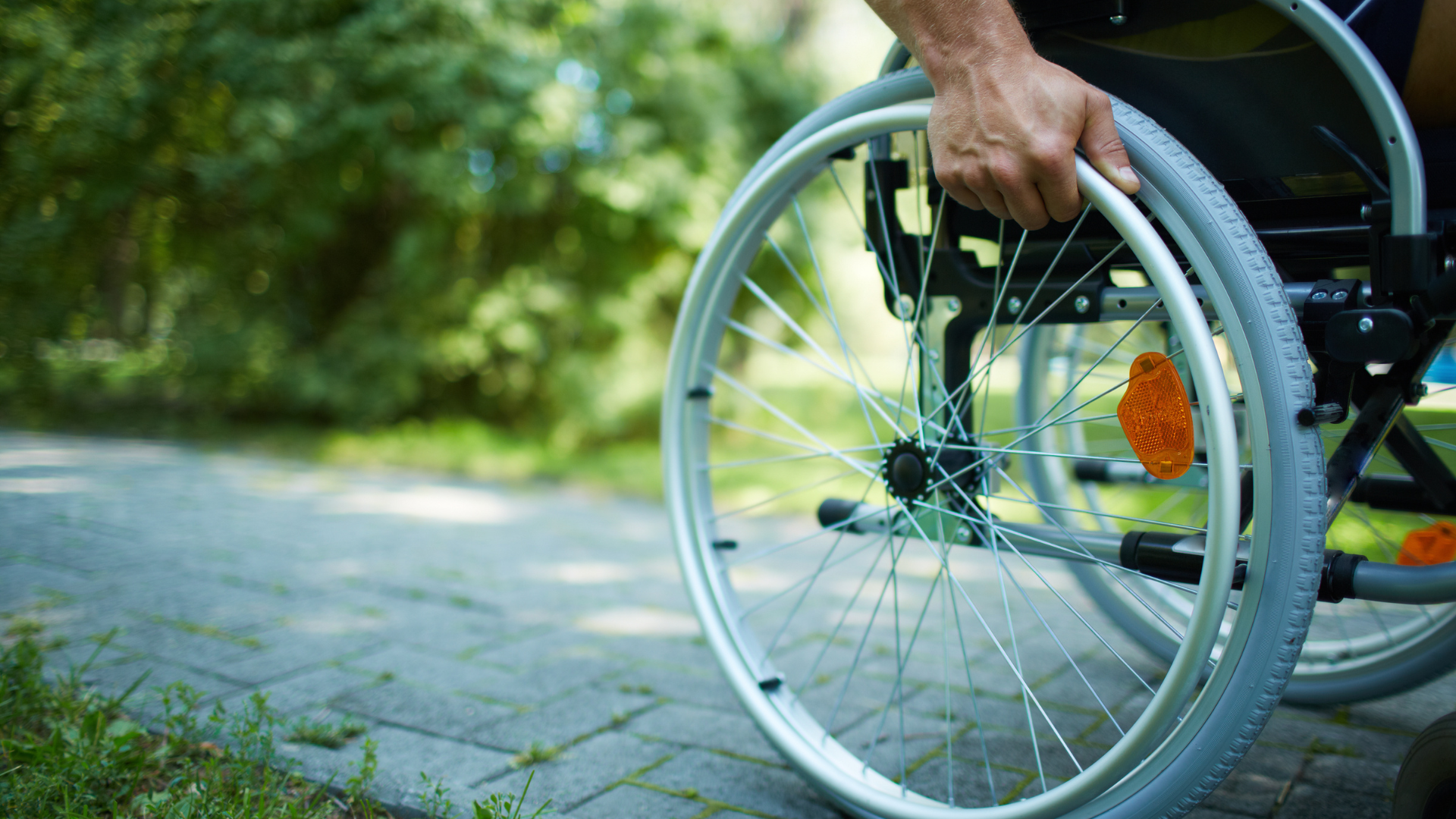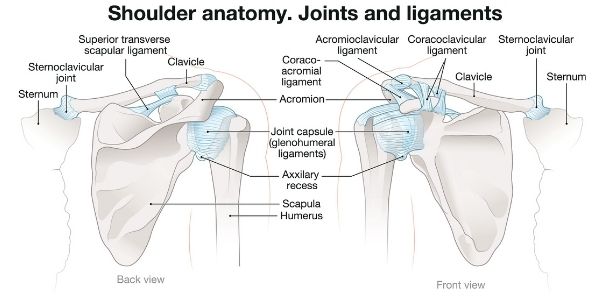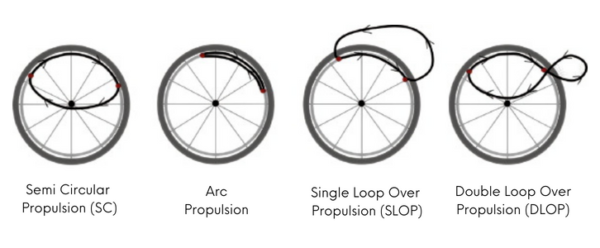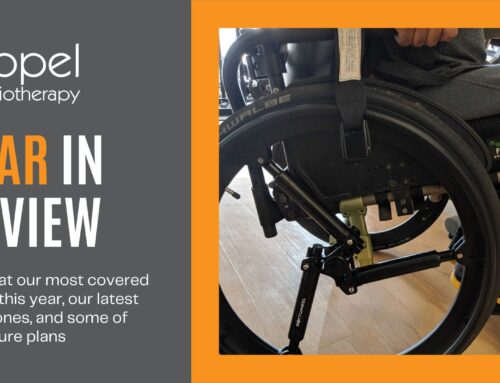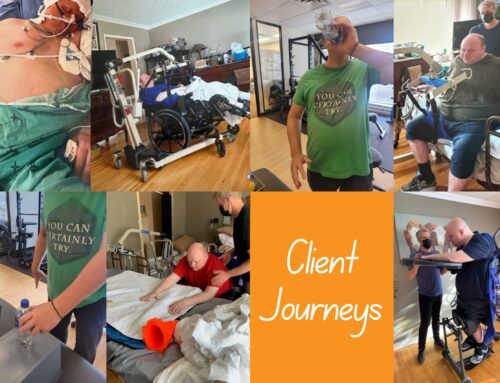Using a manual wheelchair for mobility places considerable stress on the upper limbs, particularly the shoulder joint. The repetitive nature of wheelchair propulsion as well as daily stresses of transferring and weight relieving tasks can lead to wear and tear of the shoulder joint.
It is not surprising that nearly 71 percent of manual wheelchair users experience shoulder pain at some point in their lives.[i] In this article we will look at the shoulder anatomy, activities that can lead to shoulder stress, shoulder activities that minimize stress, as well as wheelchair set up and a demonstration of proper wheelchair propulsion technique.
Table of Contents
- Overview of shoulder anatomy
- High stress shoulder activities
- Low stress shoulder activities
- Optimizing wheelchair set-up
- Proper wheelchair propulsion techniques
Shoulder Anatomy
The shoulder is an unstable joint. Think of the shoulder not as a ball and socket (hip) but more like a golf ball and golf tee. The ball moves around the socket. The socket comes off the shoulder blade.
This anatomy allows us to do things that would otherwise be impossible if the joint were more stable (like the hip joint). Great function like reaching behind your head or back comes at the increased risk of injury and damage.
Stability of the shoulder joint comes from ligaments and four rotator cuff muscles. These muscles can be affected and weak after a spinal cord injury or brain injury.
Related reading: Common Shoulder Injuries – Symptoms, Causes and Treatment Options
High Stress Shoulder Activities
The repetitive nature and forces that accompany certain activities place significant stress on the shoulder joint. This can lead to wear and tear of the muscles, ligaments and joint surfaces leading to pain and loss of function and mobility. These types of activities can include:
- Self-propelling your manual wheelchair using inefficient techniques
- Repetitive movement up ramps or larger grades that are higher stress activities.
- Lifting your wheelchair in/out of your car.
- Lifting moderate to heavy objects at home or at work especially in a repetitive fashion
- Transfers in and out of wheelchairs – especially to high or low surfaces
Lower Stress Shoulder Activities
These activities minimize stress on the shoulder joint protecting the integrity of the shoulder and minimizing pain:
- Swimming or hydrotherapy/aquatherapy
- Using power assist mobility for your manual wheelchair (e.g., Batec, Smartdrive)
- Custom shoulder strengthening program focusing on muscles not used during self-propulsion
- Using a transfer board or mechanical lift to transfer
- Self–propelling your wheelchair using efficient techniques (see Wheelchair Propulsion Technique section below for detailed description)
Optimizing Wheelchair Set Up
A properly fitted wheelchair supports optimal posture while also optimizing function. To optimize rear wheel position for hand propulsion the elbow should be at a 90-degree angle when the wheelchair user’s hands are at the top of the push rims. To minimize shoulder stress, the wheelchair user should not have to reach back too far to grasp the hand.
Positioning of the wheel axle relative to hand is also important. Research illustrates that the more forward the rear wheel is positioned, the greater the improvement in pushrim biomechanics, shoulder joint forces, push frequency, speed, acceleration and stroke angle.[ii]
Related reading: Assistive Devices for SCI Rehabilitation
Wheelchair Propulsion Technique
Wheelchair users can experience pain due to the repetitive nature of wheelchair propulsion. Proper technique is key to optimizing efficiency of propulsion while minimizing shoulder joint stress.
Recent evidence has found that the semicircular and double loop propulsion requires the least amount of muscle demand on the shoulder limiting shoulder stresses and pain.[iii] The arcing propulsion pattern (hand moving along the hand rim in the propulsion and recovery phase) is best to accomplish tasks like going up ramps. In single looping over propulsion the hands rise above the hand rim during the recovery phase.
Check out our executive director Kyle Whaley in this episode of Spinal Cord Injury Ontario‘s YouTube series Underestimated on CorTree TV. Show host Oda joins Kyle at our Etobicoke clinic to discuss physiotherapy, the importance of proper exercises, wheelchair propulsion techniques, power-assist devices and more!
At Propel Physiotherapy our therapists have the knowledge and experience in working with and treating wheelchair users. Whether you need an appropriate wheelchair set up, help in optimizing propulsion or treatment for shoulder pain, our therapists can help improve your function, mobility and independence.
References
[i] Mason B, Warner M, Briley S, Goosey-Tolfrey V, Vegter R. Managing shoulder pain in manual wheelchair users: a scoping review of conservative treatment interventions. Clin Rehabil. 2020 Jun;34(6):741-753. doi: 10.1177/0269215520917437. Epub 2020 May 12. PMID: 32397819; PMCID: PMC7364791.
[ii] Axle Position of Wheelchair, SCIRE Project Spinal Cord Injury Research Evidence
[iii] Shelby L. Walford, Jeffery W. Rankin, Sara J. Mulroy, Richard R. Neptune, The relationship between the hand pattern used during fast wheelchair propulsion and shoulder pain development, Journal of Biomechanics, Volume 116, 2021, 110202, ISSN 0021-9290, https://doi.org/10.1016/j.jbiomech.2020.110202.
Written by

